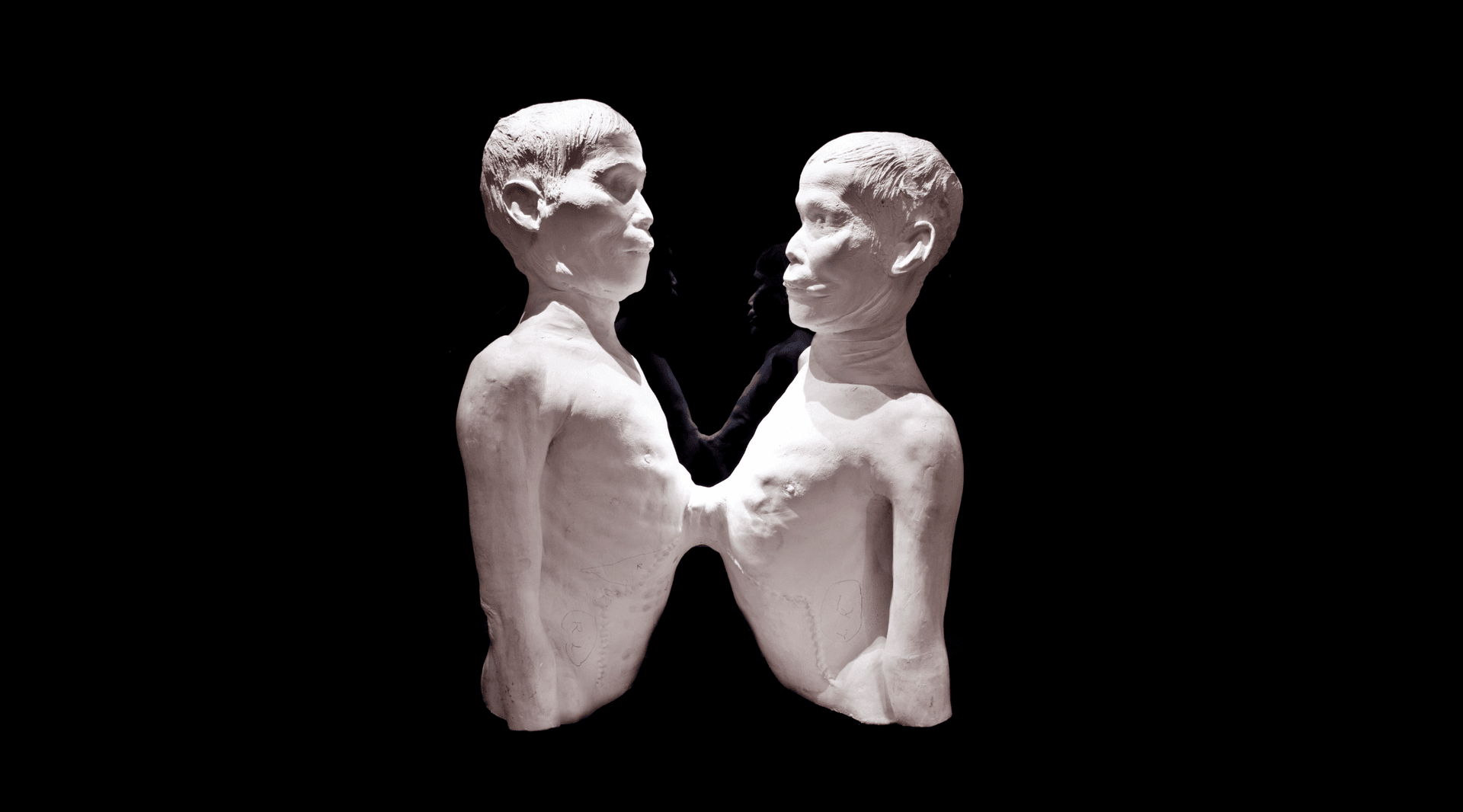These conjoined twins were born in what is now Thailand in 1811. They came to the United States in 1829 to tour and speak. Eventually tiring of life as touring performers, they married sisters and bought adjacent farms in North Carolina in the early 1840s.
When the brothers died in 1874, Fellows of The College of Physicians conducted the autopsy and arranged for the specimens to be transferred to the Museum. On display in the main Museum Gallery are their conjoined livers and the plaster death cast of their torsos.
The Museum holds a large collection of conjoined fetal specimens and other artifacts related to conjoined twins. One of the College’s most prominent Fellows, C. Everett Koop, MD, pioneered techniques to surgically separate conjoined twins.
The legacy of the Bunkers is one of the contemplation of difference, both in terms of anatomy and race, and also of an ongoing medical interest in the pathways leading to fetal abnormalities.
